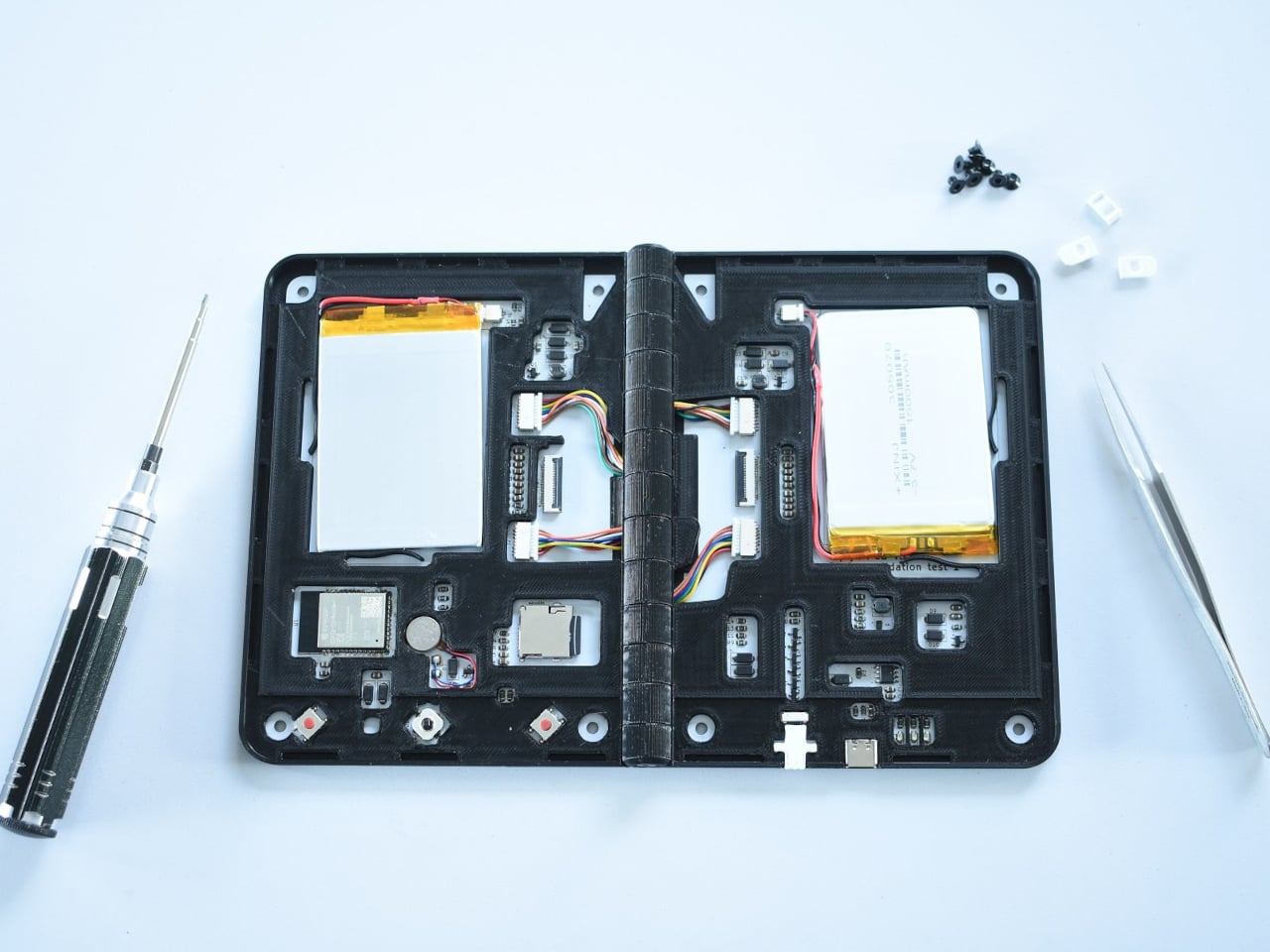
Most e-readers lock you into one screen, one store, and one way to read your digital library without much choice or flexibility. For book lovers who crave the feel of a real book, the freedom to own their library outright, and the ability to repair their devices without manufacturer permission or expensive service plans, mainstream options from Amazon and Kobo can feel frustratingly limiting and restrictive.
Diptyx is an open-source, dual-screen e-reader that changes this dynamic entirely. Designed by Martijn den Hoed, this device features a book-like design, modular hardware, and DRM-free reading capabilities. It’s built for tinkerers, readers, and anyone who wants to truly own their digital books and the device that displays them without corporate gatekeepers controlling access.
Designer Name: Martijn den Hoed

Diptyx’s form factor is instantly familiar and comforting. Two 5.83-inch e-ink screens open like a hardcover book, displaying two pages at once and closing to protect the displays without requiring a separate case. The device is slim, lightweight at 300 grams, and portable, making it perfect for reading on trains, planes, or curling up at home.

The modular case, visible screws, and user-replaceable SD card and batteries make repairs and upgrades easy for anyone comfortable with basic tools. When a component fails or new technology emerges, you can fix or upgrade Diptyx yourself rather than buying a whole new device, extending its lifespan and reducing electronic waste from landfills.

Powered by an ESP32-S3 processor, Diptyx runs custom open-source firmware currently designed primarily for EPUB reading. Upload your books via USB-C, adjust fonts and margins to your preference, and personalize your experience without accounts, cloud services, or digital rights management restrictions. However, format support is currently limited to EPUB files, meaning PDF, MOBI, or other formats require conversion before reading on the device.

The open firmware invites community contributions and modifications from developers worldwide. Developers can add Wi-Fi capabilities for RSS feeds, custom games, or even offline Wikipedia access for reference. The firmware is released under the MIT license, encouraging users to fork, modify, and share improvements with the growing community of Diptyx users who value open technology and collaborative development.

Dual 1500mAh batteries and efficient circuitry mean Diptyx runs for weeks on a single charge, with deep sleep mode extending standby to months. When it’s time for a recharge, USB-C makes it convenient and fast. If a battery ever fails or degrades over time, you can swap it yourself using basic tools and readily available replacement parts.

Diptyx’s minimalist design, black-and-white e-ink screens, and tactile case feel satisfying to hold and use during daily reading sessions. The device fits equally well in a backpack, on a nightstand, or in a maker’s workshop environment. For readers who value ownership, privacy, and the joy of tinkering with their technology, Diptyx offers a rare e-reader that puts complete control back in your hands.

The post This Open-Source E-Reader Opens Like a Real Book with No Amazon Lock-In first appeared on Yanko Design.


 Google Chrome is getting upgraded with the latest AI to make it safer, smarter and more useful
Google Chrome is getting upgraded with the latest AI to make it safer, smarter and more useful
